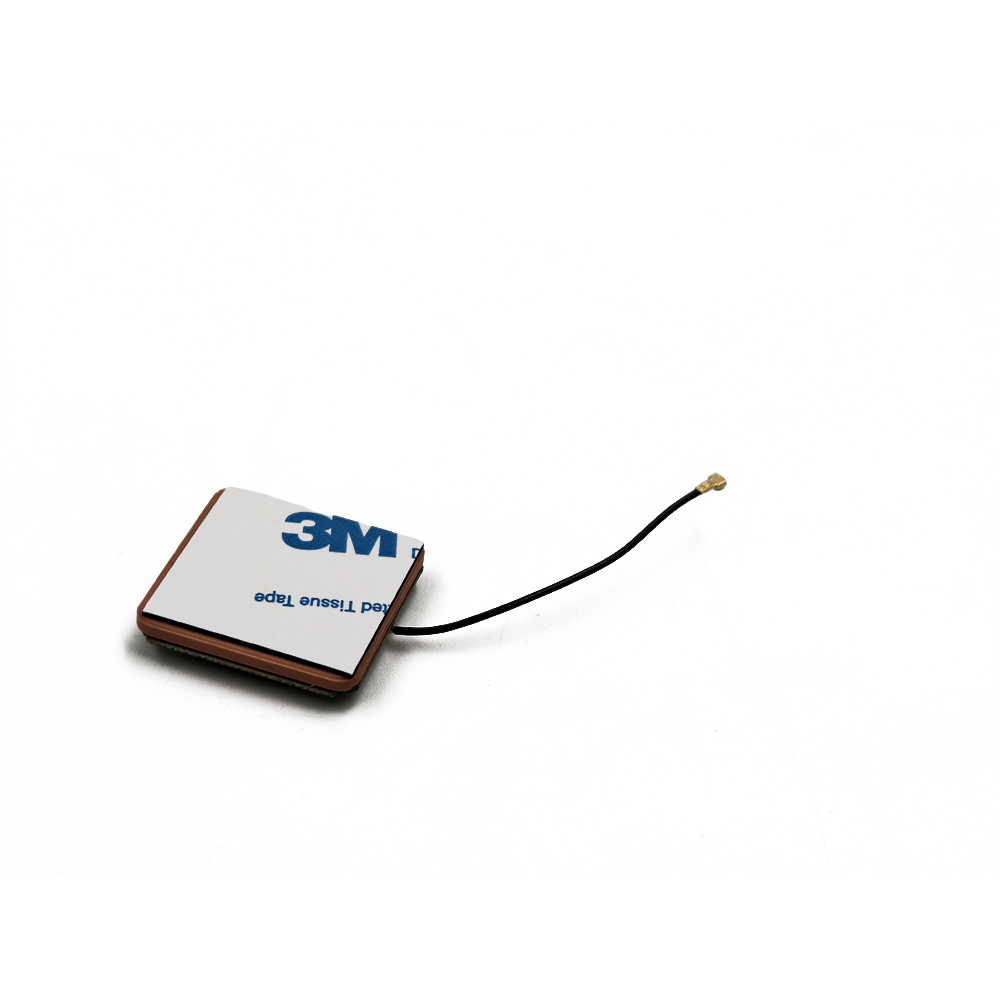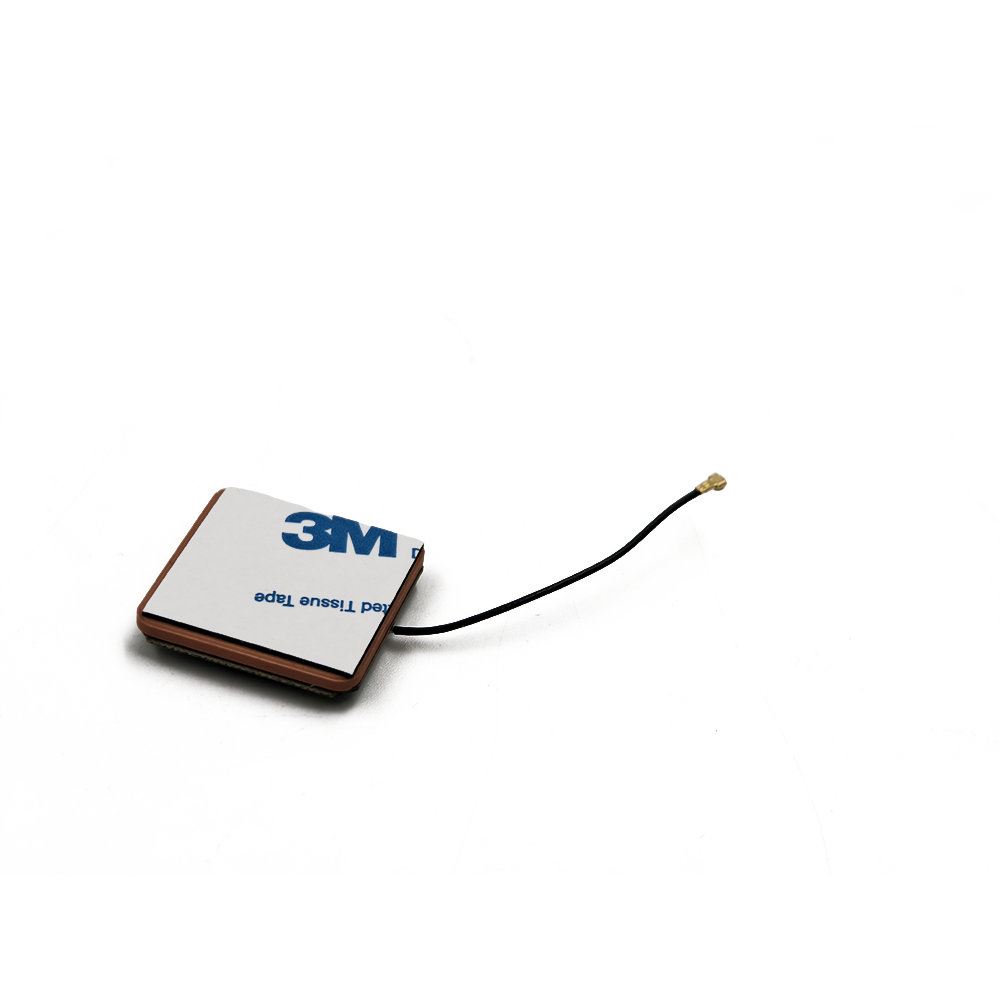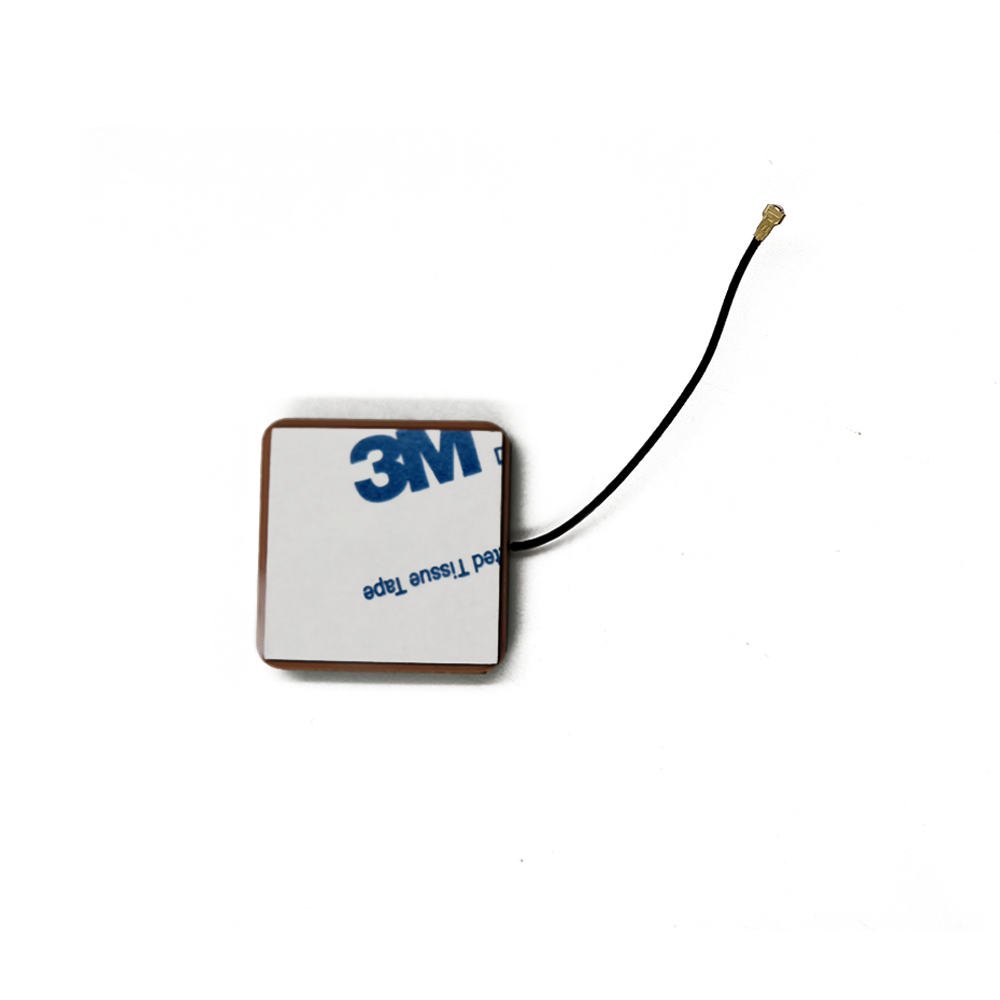Mini active GPS ceramic antenna solutions are already widely used in a variety of applications, thanks to their compact size, low power consumption, and reliable performance. As technology advances and new markets emerge, their applications will continue to expand, and new trends will shape their design and functionality. This section explores the current key applications of these antennas and the future trends that will drive their evolution.
5.1 Current Key Applications
5.1.1 Wearable Devices
Wearable devices—such as smartwatches, fitnesstrackers, and smart glasses—are among the most prominent applications of mini active GPS ceramic antennas, and for good reason. These devices demand ultra-compact components that can deliver reliable positioning without draining the battery, and mini active GPS ceramic antennas meet both criteria perfectly.
Smartwatches, for instance, use these antennas to enable location-based features like GPS navigation for outdoor activities (running, hiking, cycling), emergency location sharing (e.g., Apple Watch’s Emergency SOS or Samsung Galaxy Watch’s Safety Profile), and location-tagged fitness data (e.g., mapping a user’s running route with distance and pace). A typical smartwatch, with a case size of 40-46mm, can easily accommodate a 6mm × 6mm mini active GPS ceramic antenna—often placed under the display or near the watch’s edge, where signal reception is least obstructed by the battery or metal case. The antenna’s low power consumption (5-15 mA) is critical here: a smartwatch with a 300 mAh battery can use GPS continuously for 20-60 hours (depending on other features like display brightness) without needing a charge, which is essential for users on multi-hour outdoor adventures.
Fitness trackers, which are even smaller than smartwatches (some as small as 30mm × 15mm), rely on mini active GPS ceramic antennas to provide accurate distance and route tracking for activities like walking, running, and swimming. Many fitness trackers are water-resistant (up to 50 meters or more), and the antenna’s encapsulation (often IP68-rated) ensures it can withstand submersion without performance loss. For example, a fitness tracker like the Garmin Forerunner 158 uses a mini active GPS ceramic antenna to track running routes with sub-10-meter accuracy, even in urban areas with tall buildings.
Smart glasses—such as Google Glass Enterprise Edition or Vuzix Shield—use mini active GPS ceramic antennas to enable hands-free navigation for industrial workers, field technicians, or outdoor enthusiasts. These glasses have extremely limited space for components (the frame width is often less than 150mm), so the antenna’s small size (e.g., 4mm × 8mm) is a perfect fit. The antenna provides real-time location data, which is overlaid on the glass’s display as turn-by-turn directions—helping technicians navigate large factories or outdoor job sites without needing to check a phone or tablet.
5.1.2 IoT Asset Tracking
The IoT (Internet of Things) asset tracking market is another major user of mini active GPS ceramic antennas. Asset trackers are small, battery-powered devices that monitor the location of valuable assets—such as shipping containers, pallets of goods, vehicles, or medical equipment. These trackers require compact, low-power positioning components that can operate in harsh environments (e.g., shipping yards, warehouses, or remote rural areas), and mini active GPS ceramic antennas are ideal for this role.
Shipping container trackers, for example, are often the size of a deck of cards and are mounted inside or outside containers. They use mini active GPS ceramic antennas to track the container’s location during transit—whether by ship, truck, or train. The antenna’s integrated LNA ensures it can receive weak GPS signals even when the container is stacked in a shipping yard (where metal containers block signals) or when it’s being transported through urban canyons. The antenna’s low power consumption is also critical: a tracker with a 1000 mAh battery and a mini active GPS ceramic antenna can operate for 6-12 months on a single charge (depending on how often it transmits location data), reducing the need for frequent battery replacements.
Medical asset tracking is another important sub-sector. Hospitals use small trackers to monitor the location of expensive equipment—such as MRI machines, defibrillators, or wheelchairs. These trackers are often placed on the equipment’s frame and use mini active GPS ceramic antennas to provide real-time location data to hospital staff. The antenna’s compact size allows it to fit on even small devices (e.g., a wheelchair’s armrest), and its low noise figure ensures it can receive signals indoors (where hospital walls and metal equipment attenuate GPS signals). For example, a hospital in New York uses trackers with mini active GPS ceramic antennas to reduce the time nurses spend searching for wheelchairs by 30%, improving patient care and staff efficiency.
5.1.3 Automotive Telematics
The automotive industry uses mini active GPS ceramic antennas in telematics devices—small devices that monitor a vehicle’s location, speed, driver behavior, and maintenance needs. These devices are often integrated into the vehicle’s dashboard or OBD-II (On-Board Diagnostics) port, and they require compact, high-performance GPS components that can operate in the vehicle’s harsh environment (extreme temperatures, vibration, and EMI from the engine).
OBD-II telematics devices—such as those used by ride-sharing companies (Uber, Lyft) or fleet management firms—are typically the size of a cigarette pack. They use mini active GPS ceramic antennas to track the vehicle’s location and speed in real time, which is used to calculate fares, monitor driver safety (e.g., harsh braking or speeding), and optimize route planning. The antenna’s temperature resistance is critical here: vehicles parked in direct sunlight can reach interior temperatures of 60°C or higher, but the antenna’s ceramic material (with a low TCε) and encapsulation ensure it maintains performance. The antenna’s resistance to EMI is also important: the vehicle’s engine, alternator, and other electronic systems generate strong EMI, but the antenna’s shielding and differential signal output reduce interference.
Electric vehicles (EVs) are also adopting mini active GPS ceramic antennas for range estimation and charging station navigation. The antenna provides real-time location data to the EV’s infotainment system, which uses it to calculate the remaining range and suggest nearby charging stations. The antenna’s accuracy (sub-5-meter) ensures the infotainment system can provide precise directions to charging stations, even in crowded urban areas.
5.1.4 Medical Wearables
Medical wearables—such as glucose monitors, heart rate monitors, or patient tracking devices—rely on mini active GPS ceramic antennas to provide location data for patient care and safety. These devices are often worn on the wrist, arm, or chest, so they require ultra-compact, low-power components that do not interfere with medical sensors.
Glucose monitors for people with diabetes—such as the Dexcom G7 or Abbott FreeStyle Libre 3—use mini active GPS ceramic antennas to tag glucose readings with location data. This helps patients and healthcare providers identify patterns in glucose levels related to location (e.g., whether glucose levels drop when the patient is at a restaurant or during exercise). The antenna’s small size (e.g., 4mm × 4mm) allows it to fit inside the monitor’s sensor (which is often the size of a coin), and its low power consumption ensures the sensor can operate for 7-14 days on a single charge.
Patient tracking devices for people with Alzheimer’s disease or dementia are another key application. These devices are worn as bracelets or pendants and use mini active GPS ceramic antennas to provide real-time location data to caregivers. If the patient wanders away from home, the caregiver can track their location using a mobile app. The antenna’s integrated LNA ensures it can receive signals even in indoor spaces (e.g., shopping malls or nursing homes), and its water-resistant encapsulation ensures it can withstand daily activities like washing hands or showering.
5.2 Future Trends
5.2.1 Multi-Constellation Support (GPS + GLONASS + Galileo + BeiDou)
One of the biggest future trends for mini active GPS ceramic antennas is the addition of multi-constellation support. Currently, most of these antennas only support GPS (the U.S. satellite constellation), but future versions will support multiple constellations—including GLONASS (Russia), Galileo (European Union), and BeiDou (China). This will significantly improve positioning accuracy and reliability, especially in weak-signal environments.
Multi-constellation support works by increasing the number of available satellites. For example, in an urban area where GPS may only have 3-4 visible satellites, adding GLONASS and Galileo could increase the number of visible satellites to 6-8. This allows the GPS receiver to calculate a more accurate position (often sub-5-meter accuracy) and reduces the risk of signal loss.
To enable multi-constellation support, manufacturers will need to modify the ceramic element’s design to resonate at multiple frequencies (e.g., 1575.42 MHz for GPS L1, 1602 MHz for GLONASS G3, 1575.42 MHz for Galileo E1, and 1561.098 MHz for BeiDou B1). They will also need to adjust the LNA to amplify signals at these frequencies and the matching network to match impedance across the entire frequency range.
Multi-constellation mini active GPS ceramic antennas will be particularly useful for applications like autonomous drones (which require high accuracy for navigation) and IoT asset trackers (which operate in remote areas with few satellites). For example, a delivery drone using a multi-constellation antenna can navigate through urban canyons with sub-3-meter accuracy, reducing the risk of collisions with buildings or other drones.
5.2.2 Integration with 5G and Wi-Fi 6 for Hybrid Positioning
Another future trend is the integration of mini active GPS ceramic antennas with 5G and Wi-Fi 6 technologies to enable hybrid positioning. Hybrid positioning combines GPS data with data from 5G cell towers and Wi-Fi access points to improve accuracy in indoor or weak-signal environments.
GPS signals are often weak or non-existent indoors (e.g., in shopping malls, airports, or basements), but 5G and Wi-Fi signals are widely available in these spaces. By combining GPS data (when available) with 5G/Wi-Fi data (which provides distance to cell towers or access points), hybrid positioning can deliver sub-10-meter accuracy indoors—far better than GPS alone.
To enable this, mini active GPS ceramic antennas will be integrated with 5G and Wi-Fi 6 modules on the same PCB. The antenna will provide GPS data, while the 5G/Wi-Fi modules will provide additional positioning data. A dedicated processor will combine these data sources using algorithms like sensor fusion to calculate the device’s position.
Hybrid positioning will be a game-changer for applications like indoor navigation (e.g., guiding shoppers to stores in a mall), indoor asset tracking (e.g., monitoring the location of pallets in a warehouse), and emergency services (e.g., locating a person in a collapsed building). For example, a firefighter wearing a smart helmet with a hybrid positioning system can be tracked inside a burning building, even when GPS signals are blocked.
5.2.3 MEMS-Based Miniaturization for Ultra-Compact Devices
Micro-Electro-Mechanical Systems (MEMS) technology will drive further miniaturization of mini active GPS ceramic antennas, making them suitable for even smaller devices—such as tiny IoT sensors, implantable medical devices, or smart contact lenses.
MEMS technology uses microfabrication techniques to create tiny mechanical and electronic components on a silicon wafer. For mini active GPS ceramic antennas, MEMS can be used to fabricate the ceramic element as a thin film (just a few micrometers thick) on a silicon substrate. This reduces the antenna’s thickness from 1mm to less than 0.1mm, making it suitable for ultra-thin devices.
MEMS can also be used to integrate the LNA and matching network directly onto the same silicon substrate as the ceramic element. This creates a "system-on-chip" (SoC) antenna—where all components are integrated into a single, tiny chip (e.g., 2mm × 2mm × 0.1mm). This SoC antenna will be ideal for implantable medical devices (e.g., pacemakers or glucose sensors), which require components that are extremely small and biocompatible.
For example, an implantable glucose sensor with a MEMS-based mini active GPS ceramic antenna can track the patient’s glucose levels and location (to identify patterns related to activity or diet) without being visible or bulky. The antenna’s small size and low power consumption ensure it can operate for years on a single battery, reducing the need for invasive battery replacement surgeries.
5.2.4 AI-Powered Adaptive Tuning for Improved Performance
Artificial Intelligence (AI) will be used to add adaptive tuning capabilities to mini active GPS ceramic antennas, improving their performance in dynamic environments. Adaptive tuning allows the antenna to adjust its parameters (e.g., resonant frequency, gain, or impedance) in real time to match changing conditions—such as temperature fluctuations, EMI, or signal strength.
For example, if the antenna is exposed to high temperatures (e.g., in a car parked in sunlight), an AI algorithm can detect the temperature change and adjust the matching network’s capacitors or inductors to shift the antenna’s resonant frequency back to the GPS L1 band. This eliminates the performance loss caused by temperature-induced frequency shifts.
Similarly, if the antenna detects high EMI from a nearby Wi-Fi module, the AI algorithm can adjust the LNA’s gain to reduce noise or switch to a different satellite constellation (e.g., from GPS to BeiDou) that is less affected by EMI. This ensures the antenna maintains reliable performance even in noisy environments.
AI-powered adaptive tuning will require the antenna to include a small sensor (e.g., a temperature sensor or EMI sensor) and a microcontroller to run the AI algorithm. The microcontroller will be integrated onto the same PCB as the antenna, adding minimal size and power consumption.
This technology will be particularly useful for automotive and industrial applications, where environments are dynamic and harsh. For example, a truck’s telematics device with an AI-powered antenna can adjust its parameters as the truck moves from a cold rural area to a hot urban area, ensuring consistent positioning accuracy.
Conclusion
Mini active GPS ceramic antenna solutions have emerged as a critical component in the era of compact, battery-powered electronic devices—enabling reliable positioning in wearables, IoT asset trackers, automotive telematics, and medical devices. Their unique combination of ultra-compact size (4mm × 4mm to 12mm × 12mm), integrated low-noise amplification (0.8-1.5 dB noise figure), low power consumption (5-15 mA), and easy SMT integration has made them indispensable for applications where space, energy efficiency, and performance are non-negotiable.
As we have explored, these antennas overcome many of the limitations of traditional passive GPS antennas. Their integrated LNA ensures they can receive weak signals in urban canyons, indoor spaces, or remote areas—where passive antennas would fail. Their low power consumption extends the battery life of wearables and IoT devices, making them suitable for long-term use without frequent charging. And their compact size allows them to fit into devices that were once too small for GPS functionality—such as smart glasses, tiny asset trackers, or implantable medical devices.
Of course, mini active GPS ceramic antennas are not without challenges. Their limited gain (1-3 dBi) makes them less effective in extremely weak-signal environments (e.g., deep basements or dense forests). Their sensitivity to EMI and temperature fluctuations can reduce performance in harsh conditions. And their higher cost (compared to passive antennas) can be a barrier for cost-sensitive applications. However, these challenges are being addressed through innovations like high-gain ceramic elements, low-TCε materials, and CMOS-based LNAs—making the antennas more versatile and affordable.
Looking to the future, mini active GPS ceramic antennas are poised for significant evolution. Multi-constellation support will improve accuracy and reliability by leveraging GPS, GLONASS, Galileo, and BeiDou. Integration with 5G and Wi-Fi 6 will enable hybrid positioning, extending accurate positioning to indoor spaces. MEMS technology will drive further miniaturization, making the antennas suitable for ultra-compact devices like implantable sensors. And AI-powered adaptive tuning will ensure consistent performance in dynamic environments.
These advancements will expand the applications of mini active GPS ceramic antennas even further—into areas like autonomous drones, smart cities, and personalized healthcare. For example, autonomous drones with multi-constellation antennas will be able to navigate urban environments with centimeter-level accuracy. Smart city sensors with hybrid positioning will monitor traffic flow and air quality in both indoor and outdoor spaces. And implantable medical devices with MEMS-based antennas will track patients’ health and location in real time, improving care for chronic conditions.
In conclusion, mini active GPS ceramic antenna solutions are more than just small components—they are enablers of a more connected, efficient, and safe world. Their ability to deliver reliable positioning in compact, battery-powered devices has already transformed industries like wearables and IoT, and their future evolution will unlock even more possibilities. As technology continues to advance, these antennas will remain at the forefront of innovation—helping to build a world where every device, asset, and person can be accurately and efficiently tracked, no matter how small or remote.




































































 Language
Language
 En
En Cn
Cn Korean
Korean

 Home >
Home > 








 18665803017 (Macro)
18665803017 (Macro)













